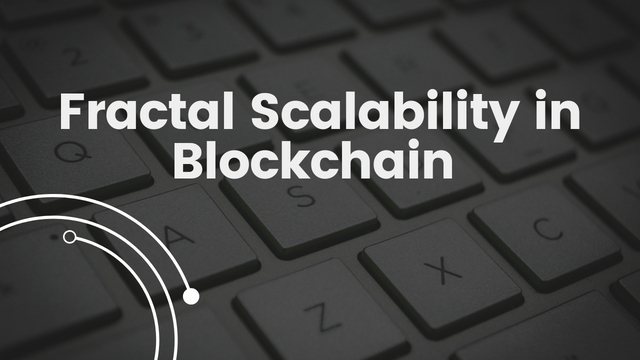Fractal Scalability in Blockchain
Fractal Scalability in Blockchain
Fractal scalability is a promising concept in the context of cryptocurrency and blockchain, aiming at taking care of the scaling problems that arise as these systems grow. As blockchain technology expands into various industries so the need for scalable solutions that maintain performance, security, and decentralization also increases. A new approach to this problem is called fractal scalability which takes advantage of self-similar iterative nature of fractals.
Key Aspects of Fractal Scalability in Blockchain
Self-Similar Network Structure: In terms of blockchain’s understanding, self-similar network structure denotes when the architectural design of a blockchain network expresses itself within different layers or segments. This ensures uniformity in performances and operations independent on network size or number of participants.
Hierarchical and Modular Design: Hierarchically designed blockchain networks can have smaller subnetworks (shards) that operate independently but are connected together. These subnetworks can locally process transactions and execute smart contracts thereby lowering the main network traffic load improving overall efficiency.
Resource Optimization: Fractal scalability redistributes the workload among different tiers or parts which make computational and storage resources more economically used by it. This is good in handling the increasing volume of transactions and data in blockchain networks.
Applications of Fractal Scalability in Blockchain
1.Sharding: On sharding, this approach involves dividing a blockchain into smaller, manageable pieces referred to as shards, each shard processing its own transactions and smart contracts for parallel processing. Each shard should function similarly to the main chain through fractal scalability to ensure consistency and efficiency are maintained.
2.Layered Architecture: Scalability can be enhanced by using different layers such as Layer 1 for base protocol and Layer 2 for off-chain transactions. Lightning Network for Bitcoin or Plasma for Ethereum are examples of layer 2 solutions that can process transactions outside the main chain while recording only final states on the main chain to reduce congestion.
3.Sidechains: Sidechains complement the central blockchain by taking care of specific tasks or applications. These side chains may interact with the main chain when needed thus enabling specialized processing without overburdening the core network.
4.Recursive SNARKs (Succinct Non-Interactive Arguments of Knowledge): Recursive SNARKs are cryptographic proofs that can be composed together in a single compact form to verify multiple transactions or blocks, enabling verification efficiency and scalability as the amount of data per node to be processed is reduced.
Why Fractal Scalability in Blockchain
There are a number of factors for using fractal scalability in the blockchain.
Increased Throughput: By permitting parallel processing and eliminating bottlenecks, this method can increase the number of Transactions Per Second (TPS) significantly.
Enhanced Security: The security of network might be improved by decentralizing workload and implementing local consensus mechanisms to avoid single points of failure.
Lower Latency: This system helps to reduce transaction processing time leading to faster consensus among nodes.
Cost Efficiency: Reducing operational costs through optimizing resource utilization and reducing mainnet computational load can lead to sustainability.
Challenges for using Fractal Scalability
Complex Implementation: To design and establish a blockchain that can scale fractally needs intricate engineering that is well versed in not only blockchain technology but also fractal principles.
Interoperability: For a network to be coherent and functional, it must have smooth interactions between its different layers, shards or sidechains.
Security Risks: Fractal scalability may improve security, however, this introduces new vectors for attacks that need to be mitigated through resilient cryptographic and consensus mechanisms.
Regulatory and Governance Issues: Running a decentralized and fractally scalable network involves governance structures that are complex as well as fair and regulatory compliant designs.
Conclusion
Blockchain and cryptocurrency networks face considerable scalability problems; however, the use of fractal scaling offers an interesting way out. This methodology based on similar-to-itself principles, hierarchical structure, modularity can increase productivity of transactions, secureness of data migrations as well as make processes more rationalized. Nonetheless being quite complicated at implementation stage with several difficulties involved; still there are numerous researches going on around it because the possibility of having a revolutionised technology like Blockchain is real. This would lead to the advent of blockchain technology which fully embraces fractal scalability in future years.


X Permotion
https://twitter.com/shabbir_saghar/status/1797216865057394930?t=mOewm5jK0i_AZ5uS16iLjg&s=19
Upvoted! Thank you for supporting witness @jswit.